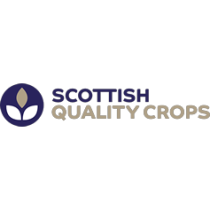Article in Gamefisher 2016
Hughie Campbell Adamson looks back on an interesting year…….
To personalise storms by calling them by their Christian names is just asking for trouble. Such familiarity is clearly welcoming, as Abigail, Desmond, Frank and Henry came uninvited to Scotland even before January 2016 was out.
The results were horrendous for many rivers. Never since the Muckle Spate of 1823 has so much damage been done to the rivers in the North East and south of Scotland. Apocryphal stories of beats losing three huts but gaining two, of salmon swimming in golf bunkers, of rivers changing their courses for hundreds of metres, of seagulls gorging on salmon eggs and parr, of straw bales and trees proving a hazard to fishing boats in the open sea; all suggest we should be nervous with regards smolt numbers in the next three years.
Sadly, it is not as if there would have been an abundance of redds. Generally, the runs were slightly better than 2014, but nothing spectacular. The spring promised so much. The Northern rivers had a spectacular start, but that early promise failed to materialise, despite consistency good water levels. The grilse run was late (now becoming the norm) and the autumn run was sporadic to say the least. Of the four big rivers, only the Spey came near its ten year average; the Tay had a very good early summer and whist the overall catch was better than 2014, a poor autumn run put the catch at 75% of the average. The Dee and the Tweed both failed to improve significantly on 2014, with their catches being 40% and 58% of the ten year average. There were as usual exceptions. The Thurso reported great runs and its catches reflected this. The Kyle rivers did well, as did the Naver and the Hallandale.
Overall the figures do not lie. From a peak of over 100,000 salmon and grilse by rod and line caught in 2010, the total for 2015 will be barely 50,000.
We should not despair. Whilst we can claim to remember those halcyon days when you could walk across the rivers on the backs of the serried ranks of salmon, the truth was often different. We have seen these peaks and troughs before and we must accept that a decline for a year or two does not mean a terminal problem. What is important is that we should afford that improvement when it comes all help we can. That is why the S&TC has been in the vanguard of those demanding measures to stop excess exploitation.
The RACCE committee of the Scottish Parliament met on 8th March to scrutinise the conservation measures, and after discussion these were approved. In essence, there will be no coastal nets for the foreseeable future, and each river has been graded I, 2 or 3. Those grade 1 rivers are deemed satisfactory, and can carry on as they are, those in 2 must be conscious that the runs are not as good as they should be, and plans will be submitted for their improvement, and those in the third group have had statutory catch and release imposed.
These measures have been greeted with a considerable opposition. The opponents comprise those anglers who think a fishing permit includes the right to kill, and those owners who see this as interference by the Government.
One has to have sympathy with both views, but the purpose of the measures is not to restrict rights but to save salmon. In all the arguments, in all the cries of “Foul”, in all the moans of “It’s not fair”, the salmon itself is often forgotten.
We in S&TC have come under sustained attack from many quarters for our forthright defence of salmon. We have been wrongly accused of wanting total catch and release throughout Scotland, (our position is clearly that any exploitation must be sustainable) we have been criticised by both the Government and by anglers/proprietors for taking the complaint to Europe which started the process. It is easy to criticise change, but unjustifiable if the status quo is untenable through diminishing returns.
It is one of those extraordinary ironies that for the past thirty- five years in Scotland, woodpigeons, crows and jackdaws have been afforded more protection than salmon. These birds despite being classed as pests can only be controlled under General Licence, which can be withdrawn.
For the first time we have a Government, and legislation to prove it, which accepts the importance of wild salmon, and the need to curtail unfettered exploitation. The status of wild salmon in Scotland is greatly enhanced, a fact which will strengthen conservation and environmental arguments in other fields.
We can argue whether certain rivers are graded wrongly (and the Marine Scotland and Marine Scotland Science have scored a spectacular own goal by failing to consult local boards and trusts before announcing the classifications), but if there are mistakes, these can be rectified in future years.
We should all look back with satisfaction that despite the criticism, the Salmon and Trout Association (as it was then), was instrumental in achieving what was vitally needed. Without the complaint to Europe, without its pressure at NASCO, without its petition, without its support of the Judicial Review, without its members giving support to the proposal, we would be facing yet another year of increased netting and diminishing runs.
Seatrout have had no mention in this article. This is because the Scottish Government has expressly excluded them from all discussions. One could be cynical and suggest this omission is convenient, in that the decline of seatrout on the west coast is the clearest indication of the mismanagement of the aquaculture industry. Ironically, on the east coast, the seatrout runs seem to be slowly improving.
PG Wodehouse observed that it has never been hard to distinguish between a Scotsman with a grievance and a ray of sunshine. We have seen this so clearly in the past year! This year we will see the enabling legislation put forward for the abolition of fishery boards and the creation of the new Fishery Management Organisations. Let us hope this can be achieved in a more cohesive manner.



